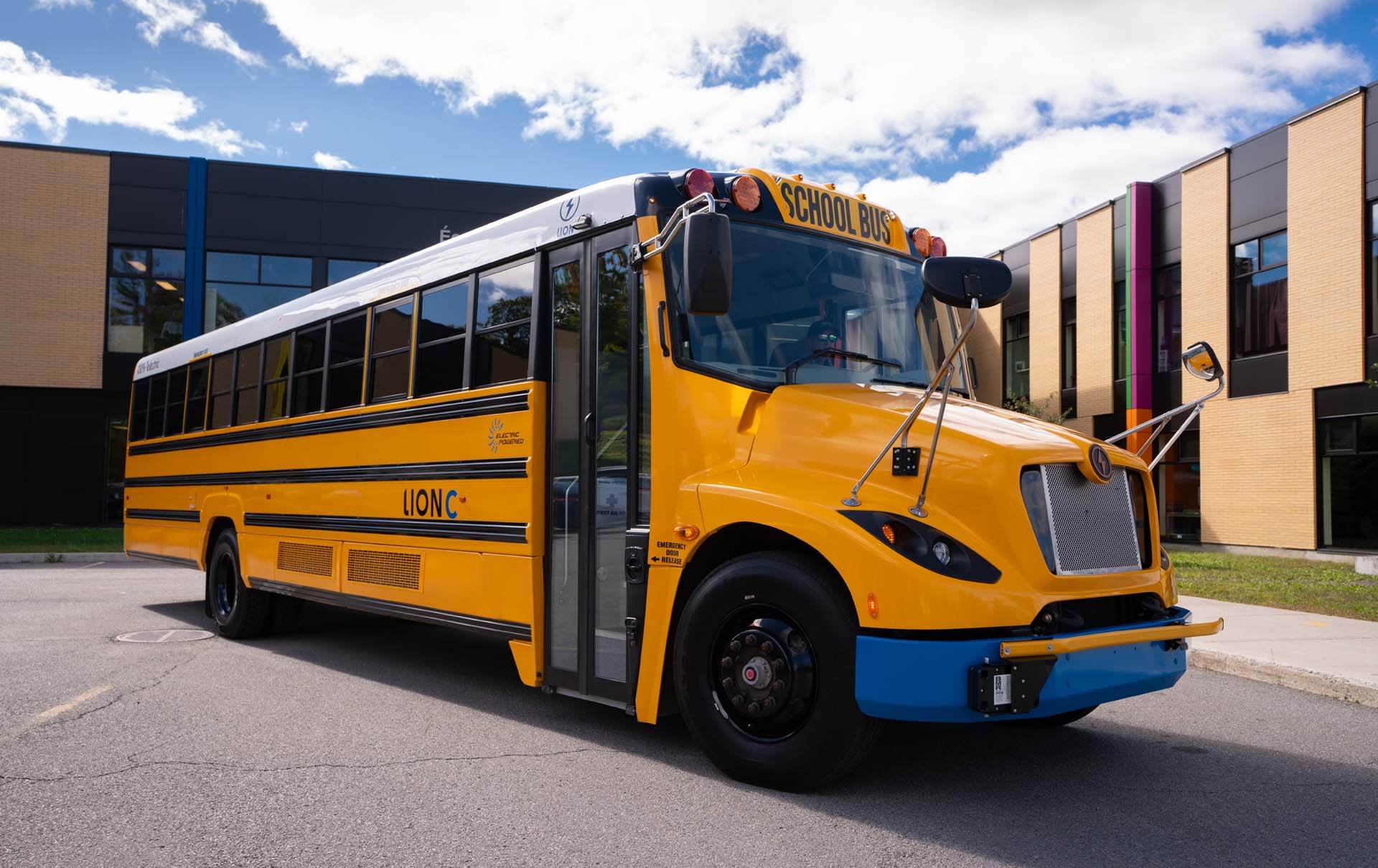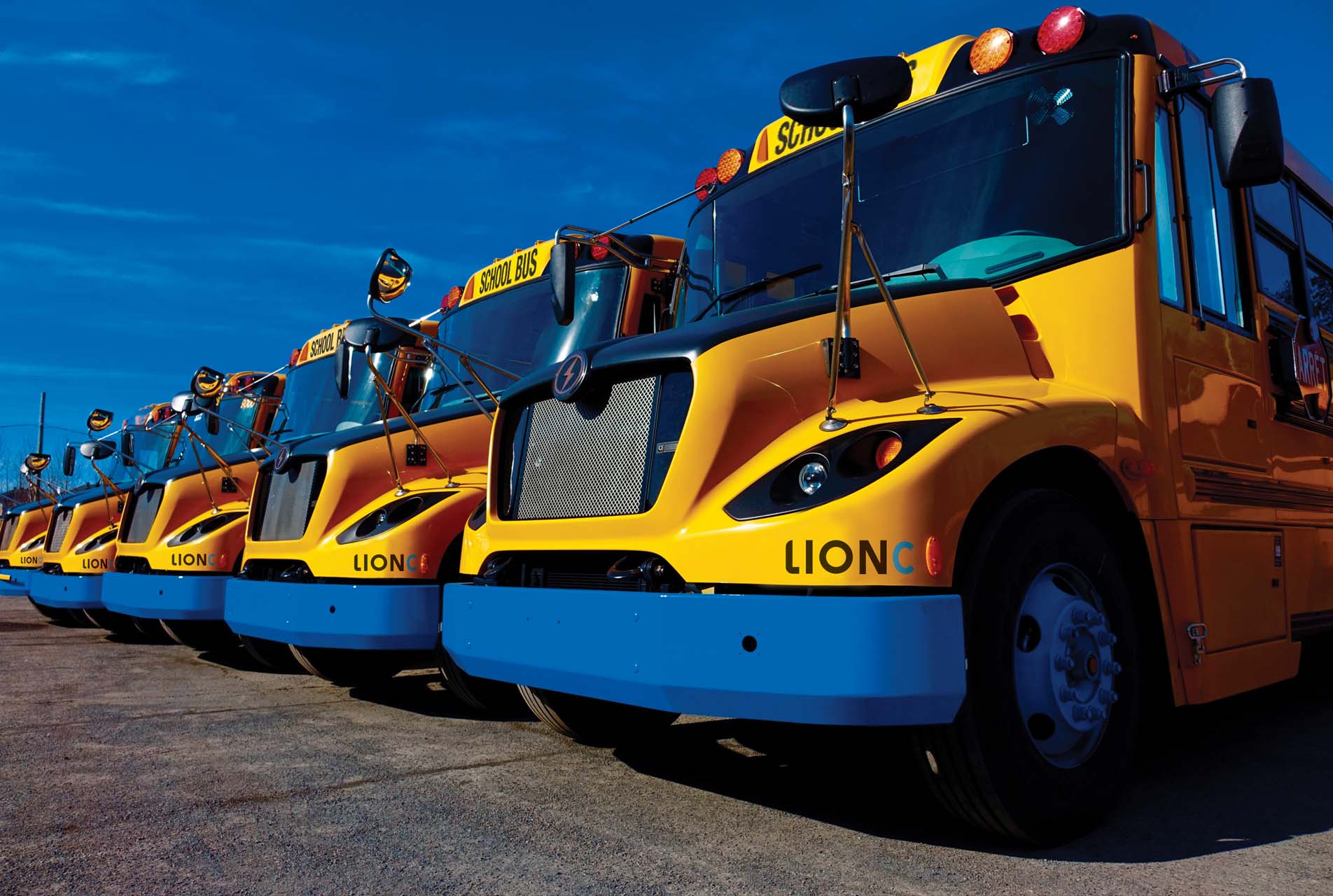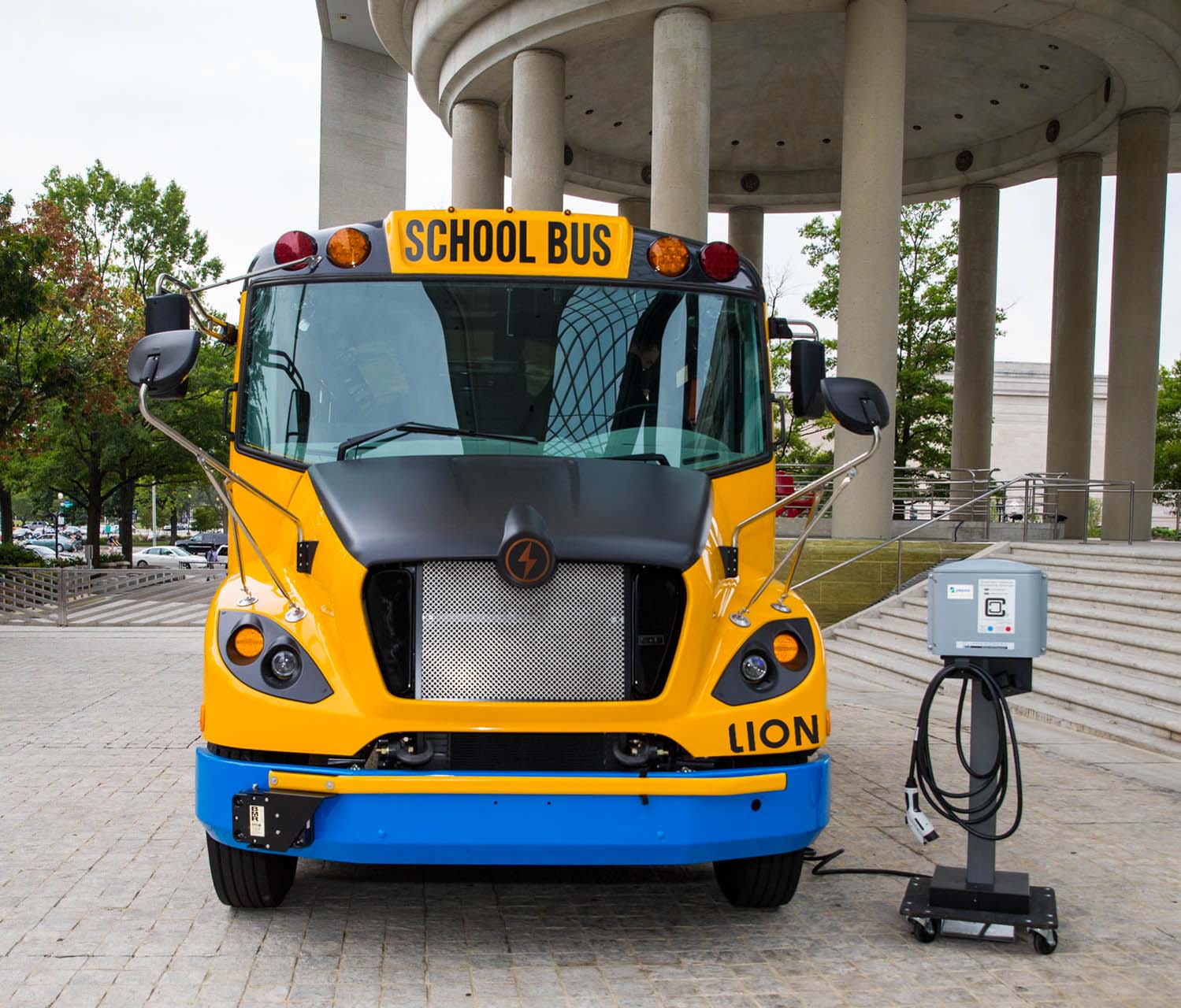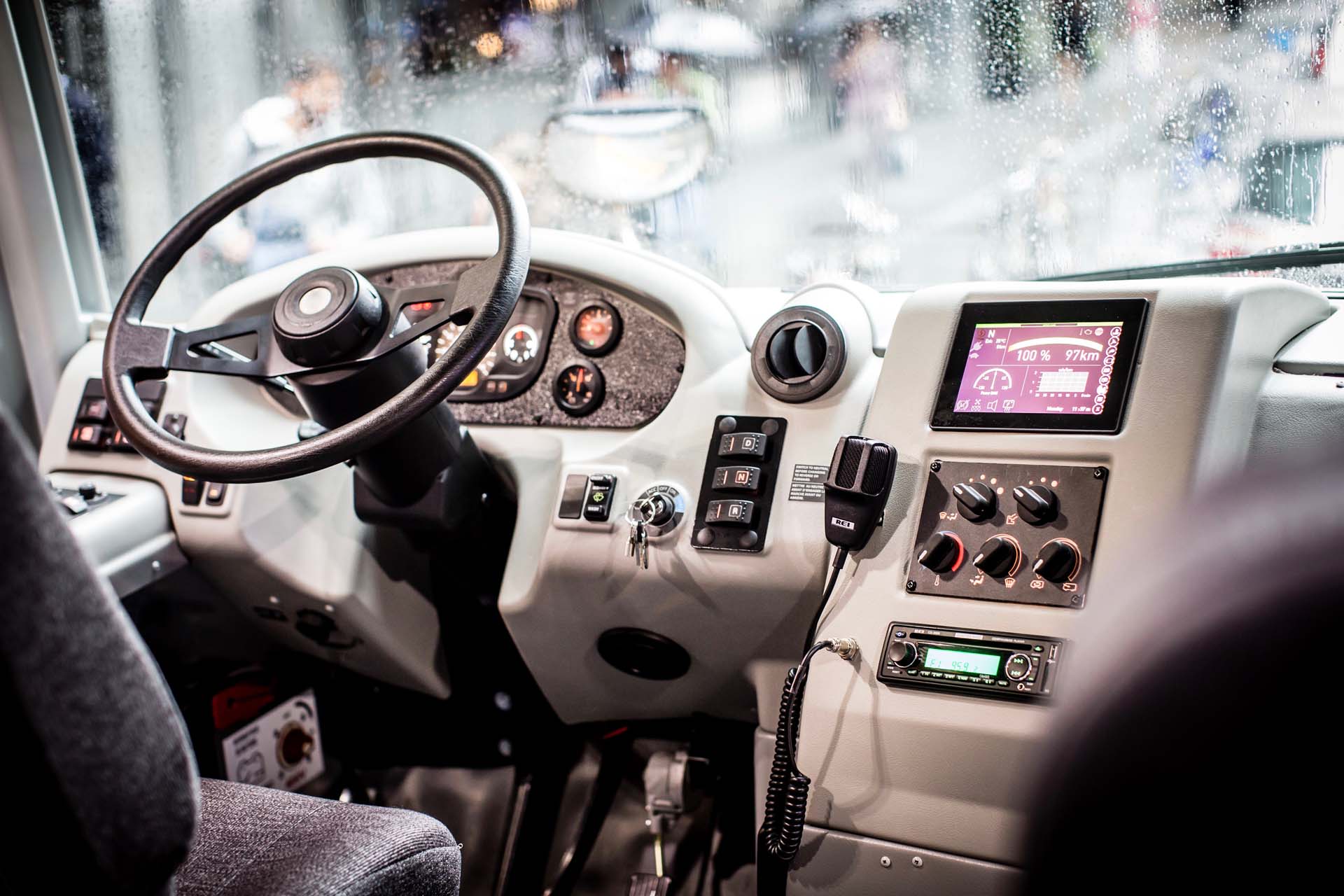1. “Electric buses don’t have the range to meet my needs.”
While this may have been the case a decade ago, electric vehicle (EV) battery technology has come a long way in recent years. Electric school buses now have ranges up to and exceeding 155 miles on a single charge.
That’s much longer than most routes require. In fact, according to a 2013 SAE study, the average school bus route is less than 32 miles, with over 99% of routes being under 78 miles.
Buses can also be charged mid-day while not on the road as needed, and achieve a full charge overnight on AC charging, which only requires a simple 220-240-volt connection similar to that of a home dryer.
2. “EVs don’t work in extreme weather.”
This is another case of technology having advanced significantly in recent years. Early mass-market passenger EVs and some heavy-duty vehicles did suffer from range degradation and the reputation still circulates to an extent today.
The reality is that not all batteries are created equal. Lion buses, for example, suffer almost no range degradation, even in sub-zero temperatures. This is because the battery packs are engineered with cold and hot weather in mind with appropriate heating and liquid cooling to keep them in the window of optimal operation – batteries operate best close to ambient room temperature.
Intelligent battery management is also key. As another example, Lion has developed its own BMS (battery management system) and BTMS (battery thermal management system) to control and access the full capability of its batteries, and drivers can expect full range in all conditions.
3. “EVs are too difficult to maintain.”
This can be a bit counterintuitive, but while EV technology is quite different in many ways from internal combustion drivetrains, EV drivetrains are actually vastly simplified by comparison. The number of moving parts in an EV drivetrain is measured in dozens, while it is measured in the thousands in its internal combustion counterpart. There can be up to 100 times fewer moving parts in an EV.
Because of this, maintenance is greatly reduced – costs go down by up to 60% versus combustion drivetrains. There is no oil to change, timing belts to replace, spark plugs and ignition, or emissions controls maintenance, as well as fewer bearings and seals, just to name a few.
Lion’s bodies and cabins are made out of composite for not only weight reduction but also rust resistance, with minimal water infiltration.
Because of these simplified platforms, EVs are not only more affordable to maintain, but also require less downtime for maintenance – one of the most important considerations for fleets. They also open up more time for maintenance staff to focus on other projects and needs.
As a result, fewer vehicles can be on the road more often, at less cost. It’s a win, win, win.
4. “EVs are too expensive.”
The upfront cost of an EV can appear significant – but there is much more to the equation that ultimately makes them the more affordable choice.
- First, there are the aforementioned maintenance savings, which on average equate to a 60% reduction over diesel, gasoline CNG or propane vehicles.
- Second, energy costs (fuel) are significantly lower – up to 80%. As a result, the total cost of ownership for an EV is significantly lower than diesel or gasoline vehicles, with a shorter ROI timeline.
- Available incentives should also be taken into account, as they can be significant. Many governments and municipalities have committed to aggressive carbon neutrality goals in recent years and offer significant incentives for switching to zero-emission vehicles. These differ based on location and available funding but can result in an immediate payback upon purchase of a large percentage of the vehicle cost.In some cases, zero-emission buses can be purchased for nearly zero overall cost to the operator once all of the incentives are taken into account.
5. “Charging EVs takes too long and is too complicated.”
EV charging can seem complicated at first glance, especially for those new to EVs. There is a small glossary of new terms that immediately appear such as kilowatts, amps and kilowatt-hours to describe energy capacity and charging speeds. Consulting with an expert can therefore make the transition much easier.
For example, Lion takes the worry out of all of this with its LionEnergy division, which helps customers determine charging needs and manages the installation and implementation of charging infrastructure so that customer fleets are ready to roll on day one.
However, in practice, once you have your infrastructure in place, charging becomes an afterthought. EVs can be plugged in whenever parked, and smart charging features such as those built into Lion vehicles can be programmed so that vehicles only charge when energy costs are low. Vehicle-to-grid technology equipped on Lion products even allows for energy in batteries to be sold back to the grid – similar to solar – for a profit.
One of the biggest advantages to EV ownership is waking up to a “full tank” every day.
6. “If I switch to EVs, I will need to train all my drivers to operate them.”
EVs drive just like their gasoline and diesel counterparts – and in many ways are actually simpler to drive. There are no gears to worry about, power delivery is smooth with instant response, and EVs are also nearly silent – with less noise, vibration and harshness than is typically associated with diesel or gasoline drivetrains.
As a result, drivers can hear more of what’s going on in the bus, visibility can be improved due to fewer constraints from engine placement, and both students and drivers are less stressed from quieter rides.
Drivers don’t need to learn any fundamentally new procedures to operate an EV. In fact, there are new onboard data and diagnostics tools that can give drivers more information than ever before.
Lion Electric, The Bright Move
Learn more at thelionelectric.com.






















